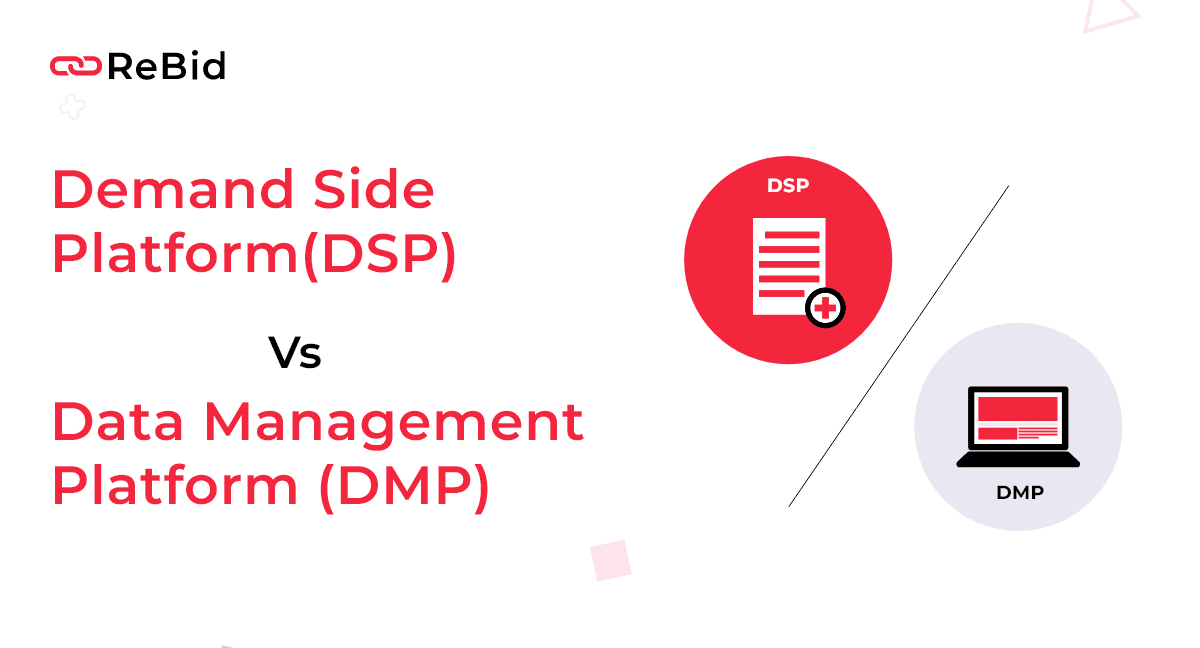What is a DSP DMP Hybrid model? When we talk about the programmatic ecosystem, DSP and DMP emerge as the two most crucial data-driven components in any effective ad tech stack. In the simplest terms, these platforms help match your ad campaigns with relevant audiences.
It is clear that actionable, real-time data steers advertising decisions, business strategies and marketing initiatives. If you are a marketer and have started using a Demand Side Platform (DSP) for your programmatic media buying needs, you have struck the right chord to create cost-effective and powerful campaigns. However, you need to step up another notch if you lack the capability to extract and match the most relevant audiences to see your ads, add to the conversions and eventually, improve your ROAS. You require solutions that will help make sense of the enormous ad data available on your DSP to effectively advertise to the right audience at the right price.
Although DSPs and DMPs are standalone platforms, they need each other to create a successful digital advertising stack. In order to realize the unique benefits of this hybrid model, let us first understand these platforms individually.
Looking for the combined powers of DMP and DSP on a single, all-inclusive, potent platform? Look no further, check out ReBid Desk
Data Management Platform

The phrase “data is the new oil” best defines the role of data in the ad tech landscape. The success of your digital advertising depends upon how efficiently you use this oil and a DMP does just that. A DMP is a repository that extracts, gathers, standardizes and analyzes data gathered from different channels and platforms. In other words, DMPs collect massive instances of data and turn them into useful, understandable and actionable insights. A DMP allows you to consolidate first, second and third-party data.

A DMP further provides brands with:
- Content personalization
- Price & inventory optimization
- Sophisticated audience segmentation and analytics
- Website, social media and app analytics
- Creation of lookalike audiences
- Tools to manage the customer life cycle
Demand Side Platform

A demand-side platform or DSP allows advertisers to buy ad spaces programmatically across various digital media channels. DSP connects advertisers with data providers on one end and supply-side platforms (SSP) representing publishers on the other. The transaction of buying and selling ad spaces takes place at the Ad Exchanges.
DSP uses real-time bidding (RTB) to negotiate a price per impression on the SSP on behalf of the advertiser. Then, the ad is displayed on the publisher’s site once the DSP wins the auction on the Ad Exchange at a negotiated price. In addition to ad buying, DSPs also execute campaigns and track ads.
A DSP also provides targeting options based on geolocation, device type, browser, domain URL and traffic category. A comprehensive tool for campaign management, DSPs enable advertisers to receive real-time reports to view and analyze the impact of their ads.
A DSP-DMP hybrid model – a match made in heaven

One of the most vital roles of a DMP is to supply the data that it has collected and analyzed to a DSP. This additional information about customers allows the DSP to provide you with more precisely targeted ad buys.
A DMP without a DSP would essentially be just an enormous store of information. But, on the other hand, without being integrated with a DMP, a DSP would function in the dark as it tries to buy digital ad placements without comprehensive customer information.
Hence, for your ad tech stack to be effective, these platforms must exist and operate in symbiotic tandem.
A DMP-DSP hybrid further helps ease digital marketing functions in the following ways:
- Organize your first-party data:
A DMP standardizes your first-party data collected from different channels and sources and consolidates it in one place. This gives better insights into your entire audience spectrum, ways to enhance their Life Time Value (LTV), the exact ad message to be conveyed and the best channels to reach them. In addition, a DMP provides a holistic view of the customer data environment by building data hierarchies.
- Meaningful segmentation:
DMPs can organize customers into specific groups, better known as segments, and create custom audiences. When advertisers set up campaigns on a DSP, they can easily pull the required segments for targeting from the DMP based on corresponding campaign requirements. As a result, DMPs allow advertisers to attract narrower, niche traffic to their ads, fine-tune their content strategy applicable to different audience segments and thus achieve higher ROAS.
- Actionable insights from audience management:
Advertisers can perform an in-depth analysis of the audience data segregated into segments and hierarchies in a DMP. DMP can also map customers’ behavior and intents and chalk an insightful consumer footprints journey. This, in turn, helps DSPs recognize where precisely a group of audience sits in the marketing funnel and devise a strategy to target this group with relevant ad messages resulting in improved engagement and conversions.
Is a DSP – DMP hybrid solution for you?
A DSP-DMP hybrid is a single system where the two pillars of the ad tech landscape work in tandem. As a result, you deal with a single unit which would mean single vendor management, lower miscommunication, higher efficiency and eventually, lower operational costs.
And at ReBid, we ensure just this – more value add and a hassle-free, state-of-the-art ad tech platform for marketers. We enable brands to create unprecedented audience targeting precision in three ways. First, with the in-built DMP on our DSP – ReBid Desk that leverages millions of omnichannel data profiles from global consumers across campaigns. This audience is your first-party data that streamlines retargeting. Second, ReBid Desk is also integrated with the data marketplaces of premium identity solution providers like Liveramp. This further strengthens our capability to build a holistic audience creation and management system. Third, and most importantly, our customized CDP – ReBid Insights – takes care of the deeper nuances of a data-driven advertising model even in the post-cookie landscape.
Talk to our experts to know more about ReBid or consult for programmatic advertising solutions.





